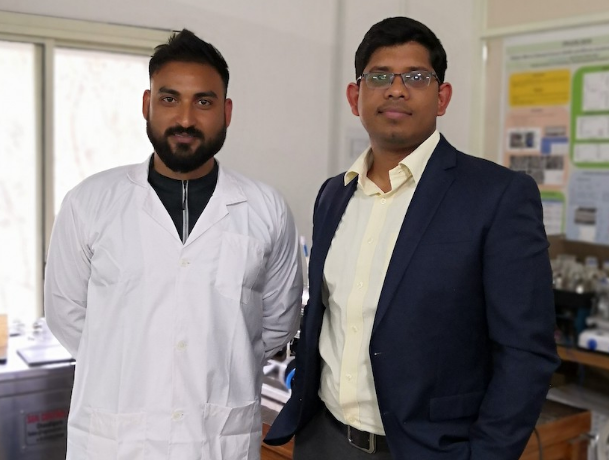IIT Mandi focuses on preventing neurological problems
March 15, 2021 | Monday | News
Develops a scalable method for efficient removal of heavy metals from water
A research team at the Indian Institute of Technology Mandi, led by Dr Sumit Sinha Ray, Assistant Professor, School of Engineering, has developed a fibrous membrane filter using a biopolymer-based material to remove heavy metals from water.
Acid mine drainage containing large quantity of heavy metals is a menace. Heavy metals in water could lead to several neurological problems in human including Alzheimer's disease, Parkinson’s disease, and multiple sclerosis, and it is important to develop filters to treat effluents that are released into water bodies to prevent pollution.
The results of this research have recently been published in Elsevier journal, Polymer. The paper has been co-authored by Dr Ray and his research scholar, Ashish Kakoria, along with Dr Suman Sinha Ray, Adjunct Assistant Professor, University of Illinois at Chicago.
“The problems of arsenic pollution in the Ganga basin are well known in India,” says Dr Ray.
These membranes contain adsorbents – materials that attract and hold the metals to binding sites in question. “One specialty of these adsorbents is that they contain a large amount of a biopolymer, Chitosan, derived from crab shells that is mixed with a well-known polymer, nylon,” explains Dr Ray.
IIT Mandi researchers have used a process called ‘solution blowing’.
“Apart from producing nanofibres, solution blowing processes can enable blending of natural polymers like chitosan, lignin etc with synthetic polymers like Nylon, Poly(methyl methacrylate) etc,” says Dr Ray. Using the solution blowing technique, the IIT Mandi team could replace 40 per cent of the nylon with chitosan.
Normally adsorbent fibres bind to the target metal only at their surface, in their nanofibre membranes, the adsorption was seen to happen at the sub-surface scale as well.
The membranes could be reused at least eight times before there was considerable reduction in the efficiency of metal adsorption. Recovery of the adsorbed metal in a metal-hydroxyl nitrate form was also easy, which is a value-addition to the membrane filter.
The researchers tested their membrane with copper laden water, to establish proof of principle.
Dr Ray and his research team at IIT Mandi are all set to scale up the technology to industrial scales, to handle larger volumes of metal-contaminated water. This study is funded by the Ministry of Mines, Govt of India.
Image caption- (R to L) Dr. Sumit Sinha Ray, Assistant Professor, School of Engineering, IIT Mandi, along with his reseach scholar Ashish Kakoria










